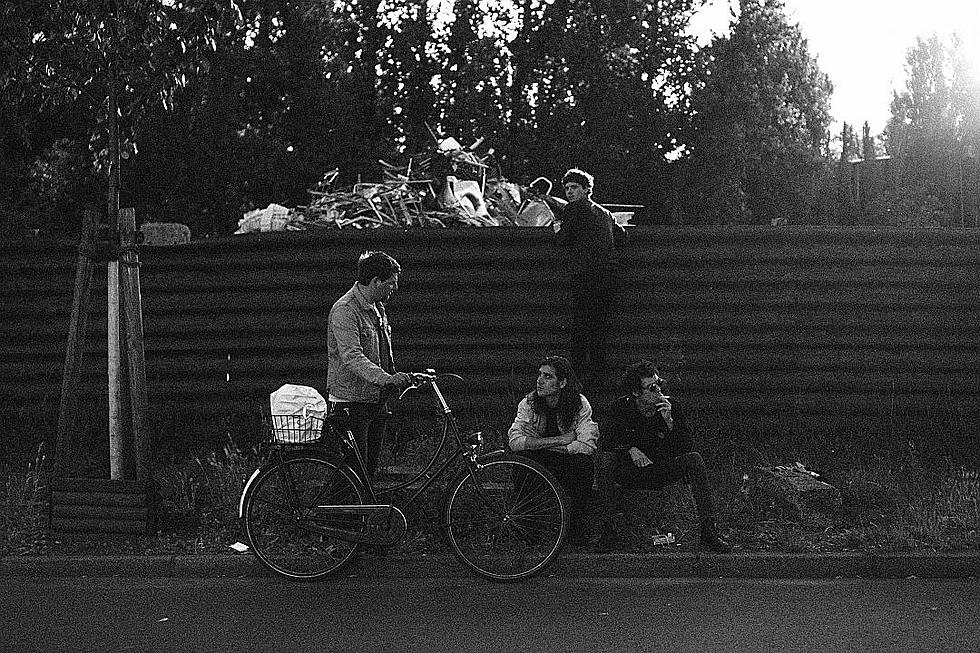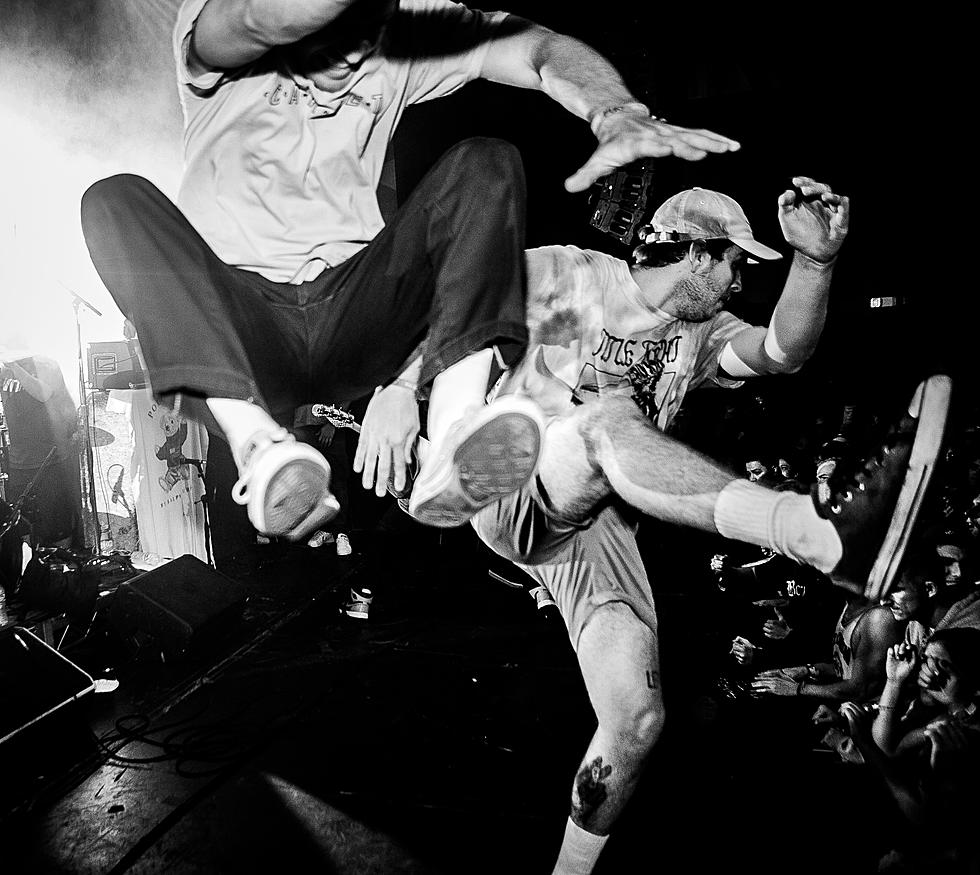
Tragic Figures: 15 Post-Punk Obscurities You Shouldn’t Sleep On
It didn't take long for John Lydon to become bored with the Sex Pistols, a group that he viewed as a necessary evil. While the media and second-wave bands were obsessing over the '77 punk sound, Lydon, aka Johnny Rotten, was trying to find new ways to incorporate tape machines, dub reggae and performance art into his newest project, Public Image Ltd. True, some of his critics and peers didn't understand his vision, but bands like Joy Division, Magazine and the Fall were crucial in their roles, ensuring that punk didn't become stale or sink into the mediocre abyss that New Wave was quickly becoming.
And so, whether it be Gang of Four's funk-infused disco-punk, Wire's krautrock influences or the world music inflections of the Talking Heads, post-punk in essence was about expanding the sonic palette of punk while maintaining its political and existential urgency. There is no shortage of resources these days when it comes to discovering music, but in any case, here are some relatively obscure, but essential post-punk albums ...
SAVAGE REPUBLIC, TRAGIC FIGURES (1982)
Savage Republic play intense post-punk augmented by noisy guitars and surfy interludes, all against a background of industrial percussion. The tribal beats and snarling vocals recall Public Image Ltd's The Flowers of Romance era, with angular guitars and self-aware vocals reminiscent of Killing Joke during their heavy What's THIS For...! period. Yet, Savage Republic offer something more profound than their contemporaries across the pond, an impression that begins to reveal itself as Tragic Figures unfolds. This album has a definitive concept, one that this overlooked band from Los Angeles presents in a way that feels as urgent as Crass at their most scorned, and as ambitious as the Pop Group at their most cathartic.
THE FREEZE, IN COLOUR (1979)
Not the hardcore band from Cape Cod. Gordon Sharp is known as a contributor to the fluctuating lineup of This Mortal Coil, and mainly for his work with Cindytalk, but his roots can be traced back to Scottish post-punk group the Freeze, not to be confused with the better-known band from the States. The Freeze released two EPs, the first of which, In Colour, should be considered a classic of dark punk. The music on the first two tracks is gloomy and driving, but it's the third track, "Psychodalek Nightmares," that demonstrates the intense vibe and lyrical content that the band was going for, falling somewhere between Syd Barrett and Wire.
PYLON, GYRATE (1980)
Few bands can rival Gang of Four when it comes to infectiously danceable post-punk, so who would have thought that a humble band from Athens, Ga., would rise to the occasion? What sets Pylon a notch above the rest is without a doubt the powerful vocal presence of singer Vanessa Briscoe Hay, whose oscillation between sultry whispers and high-energy shrieks make the nonchalant British groups that they were influenced by feel disappointingly less vibrant. Pylon ride the line between Gang of Four, Wire and ESG, and their 1980 debut, Gyrate, is an underrated dance-punk classic that deserves recognition, along with their follow-up, 1983's Chomp.
GRAUZONE, DIE SUNRISE TAPES (1981 / 1998)
Die Sunrise Tapes is actually a reworked version of Grauzone's 1981 self-titled album, with a rearranged track order and a few songs added, most notably "Eisbär," their biggest and most accessible single. The Swiss group plays post-punk infused with minimal-wave, typical of the Neue Deutsche Welle sound and right at home with the Danes featured on the superb Somewhere Outside compilation, worth investigating if you're looking for more synth-heavy post-punk from Denmark. Grauzone offer a varied and multifaceted collection on Die Sunrise Tapes, at times sounding as punky as early Joy Division and, at others, akin to D.A.F. in their role as precursors to EBM and techno.
ABECEDARIANS, SMILING MONARCHS (1985)
Factory Records released Smiling Monarchs in 1985 as a debut 12" EP from Los Angeles post-punk group Abecedarians, one of the few groups from the States that Factory endorsed at that time. The title track has a big beat laced with treated guitars and sequenced keyboards, not unlike New Order's sound at that time (in fact, the A-side was produced and mixed by Bernard Sumner, and as a result, Abecedarians secured an opening spot on New Order's 1985 Low-Life tour). Abecedarians moved on from Factory after this release and never quite matched this level of creativity, though 1987's Eureka is still worth a listen.
JAH WOBBLE, THE LEGEND LIVES ON ... JAH WOBBLE IN "BETRAYAL" (1980)
"Betrayal" is an apropos title for Jah Wobble's debut album; the infamous dub bassist "borrowed" several of the tracks from Public Image Ltd's Metal Box album for his solo project, a betrayal that allegedly caused a rift between him and John Lydon, resulting in Wobble's departure from the group. In his defense, Jah Wobble both played and wrote the basslines, and arguably laid the foundation for PIL's early sound, along with Keith Levene. But alas, the circle of betrayal brought things back around when Flipper stole the bassline of "Today Is The First Day..." for their classic "Sex Bomb" one year later.
XMAL DEUTSCHLAND, VIVA (1987)
Xmal Deutschland were Germany's answer to Siouxsie and the Banshees, and although the comparison is quickly made, this mostly female group stands on its own merits. Viva was the record that followed their temporary residence on 4AD, which resulted after their opening slot for the Cocteau Twins attracted the attention of Ivo Watts-Russell. Singer Anja Huwe's powerful vocals add substantial force to Xmal Deutschland's sound, supported by jangling, creeping guitars and a pounding rhythm section. A must-listen band if you're looking for more gothic post-punk in the vein of Siouxsie and the underrated U.K. group Skeletal Family.
ESSENTIAL LOGIC, BEAT RHYTHM NEWS (1979)
Saxophone has managed to lend itself surprisingly well to post-punk, and it served as the focus for Lora Logic's post-X-Ray Spex band, Essential Logic. Beat Rhythm News was the only full-length released by this rambunctious-sounding group of musicians, who straddle the line somewhere between the Cravats, Pere Ubu and the Slits. Lora Logic's vocal presence is far less irritating than the ear-piercing shrieks of X-Ray Spex's Poly Styrene, opting for a range more aligned with the powerful and creepy croon of Siouxsie Sioux or Ari Up. There are a lot of layers to Beat Rhythm News, making room for dark and artful moments that are expertly juxtaposed with the hyperactive danceable zaniness.
BLITZ, SECOND EMPIRE JUSTICE (1983)
Blitz were a legendary Oi / UK 82 band whose 1982 album, Voice of a Generation, is heralded as a pinnacle of the genre, so it's not surprising that the release of Second Empire Justice — an album that saw Blitz trade in their Oi anthems for gloomy post-punk — incited a negative reaction. The band was labeled "sellouts" by fans, who were only able to see the progression as an attempt to jump on the Factory Records bandwagon. Though the sudden shift to New Wave may have been polarizing — and despite overt influences and possibly direct plagiarism of Echo and the Bunnymen and Joy Division — Second Empire Justice is ultimately Blitz's best material.
HELIOS CREED, SUPERIOR CATHOLIC FINGER (1989)
Helios Creed is known for his distinctive guitar sound, which he created while "listening to Black Sabbath on LSD on headphones when he was a teenager." The acid-punk outsider was a prominent member of the prolific San Francisco band Chrome, a group that infused their brand of alien post-punk with industrial, psychedelic rock and krautrock influences. Superior Catholic Finger was released in 1989 as Helios Creed's second solo album, and saw the mad genius following up on the stripped-down acid-punk style of his brilliant debut, X-Rated Fairy Tales, with a sound that is heavily indebted to the Residents and visionary weirdo Geza X.
THE DANSE SOCIETY, HEAVEN IS WAITING (1983)
The Danse Society are a somewhat forgotten group, whose mix of gothic rock, post-punk and darkwave falls right into place between the Cure's Pornography era and the Sisters of Mercy's First and Last and Always. Despite never making it as big as their contemporaries, the Danse Society had all of the right ingredients for success: heavy, pulsing bass and percussion sliced through by chorus-laden guitars and arpeggiated synths. Frontman Steve Rawlings brings a death-rock element to the group with his romanticized themes of spiritual persecution and damnation.
DIÄT, POSITIVE ENERGY (2015)
The only modern album here. Diät have honed in on a very specific mix of post-punk and death-rock that was perfected (and possibly invented) by Crisis, and has hitherto never seen its equal. It may be true that Warsaw laid the groundwork for this sound, but Crisis carved their own niche by injecting peace-punk with dark, minimalistic goth and post-punk riffs. A few others have tried to recreate this satisfying concoction in recent years, but only Diät (and Total Control) have succeeded in sounding this genuine in their efforts. The tones, pacing and vocals on Positive Energy are just perfect, occasionally summoning early Christian Death during the more driving moments. It's undeniable that Diät's influences were painstakingly researched, but for once, it paid off.
ASYLUM PARTY, BORDERLINE (1989)
Really more of a cold wave album, Asylum Party's Borderline is less synth-reliant than the majority of their French contemporaries, and perhaps what makes it all the more impressive is the fact that it is essentially a guitar-driven album. This is possibly one of the warmest-sounding cold wave albums out there, and it benefits tremendously from the production, which takes this record almost into dream-pop territory. Unlike Martin Dupont or Trisomie 21, Asylum Party excelled not in their ability to sound automated, but rather in their Wall of Sound approach to gothic post-punk.
PSI COM, PSI COM (1985)
Plenty of '90s alt-rockers got their start playing in legitimate underground punk and goth rock groups before breaking into the mainstream and cashing in. (Ian Astbury, for example, began with Southern Death Cult / Death Cult before hitting it big with the Cult.) One lesser-known group is Psi Com, the Bauhaus-worshipping band fronted by Perry Farrell, who would later go on to form Jane's Addiction and Porno for Pyros. Psi Com had only a few EPs before disbanding so that Farrell could move on to bigger (but not necessarily better) things.
THE CRAVATS, IN TOYTOWN (1980)
The Cravats were an underrated art-punk group who were involved with Small Wonder, a label that put out early releases from Crass, the Zeros, Angelic Upstarts, Bauhaus and the Cure, among others. Crass Records also released the Cravats' 1982 single "Rub Me Out," which is another great record and further proof that the Crass lineup was quite diverse. In Toytown is a bizarre and creeping mixture of post-punk, anarcho-punk and driving ska that isn't so much "ahead of its time" as it is "in a time of its own."
More From CLRVYNT









